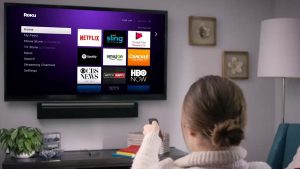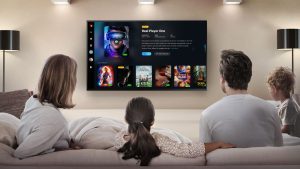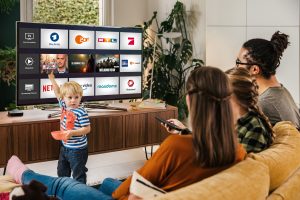
Introduction
The media landscape has undergone a seismic shift over the past decade, driven largely by the rise of streaming services. This transformation has had profound implications for traditional television ratings, altering how content is consumed and measured. This article delves into the multifaceted impact of streaming on TV ratings, exploring the various dimensions and consequences of this shift.
The Rise of Streaming Services

-
A New Era of Content Consumption
Streaming services like Netflix, Hulu, Amazon Prime Video, Disney+, and HBO Max have revolutionized the way audiences consume content. These platforms offer on-demand access to a vast library of movies, TV shows, and original programming, allowing viewers to watch what they want, when they want. This convenience has attracted millions of subscribers worldwide, challenging the dominance of traditional television.
-
The Cord-Cutting Phenomenon
One of the most significant trends associated with the rise of streaming is the phenomenon of cord-cutting. Many consumers are opting to cancel their cable or satellite TV subscriptions in favor of streaming services. This shift has led to a decline in traditional TV viewership, impacting TV ratings and the advertising revenue that networks rely on.
Measuring TV Ratings in the Streaming Age

-
Traditional TV Ratings
Traditional TV ratings have long been measured by companies like Nielsen, which use a combination of surveys and electronic meters to track viewership. These ratings provide valuable data on how many people are watching a particular show, which helps networks and advertisers make informed decisions.
-
The Challenge of Measuring Streaming Viewership
Measuring viewership for streaming services presents unique challenges. Unlike traditional TV, streaming platforms do not have a standardized system for reporting viewership data. Each platform uses its own metrics, making it difficult to compare performance across services. This lack of transparency has led to calls for more standardized measurement practices in the streaming industry.
-
Hybrid Measurement Models
In response to the challenges of measuring streaming viewership, some companies are developing hybrid measurement models that combine traditional TV ratings with streaming data. These models aim to provide a more comprehensive picture of how audiences are consuming content across different platforms.
The Impact on TV Networks and Advertisers

-
Shifting Advertising Strategies
The decline in traditional TV ratings has forced advertisers to rethink their strategies. Many are reallocating their budgets to digital and streaming platforms, where they can reach a more targeted audience. This shift has led to the growth of programmatic advertising, which uses data and algorithms to deliver personalized ads to viewers.
-
The Rise of Branded Content and Product Placement
As traditional advertising becomes less effective, networks and advertisers are exploring new ways to reach audiences. Branded content and product placement have become increasingly popular, allowing brands to integrate their messages directly into the content. This approach can be particularly effective on streaming platforms, where viewers are more likely to engage with the content.
-
The Role of Data Analytics
Data analytics plays a crucial role in the streaming age. Streaming platforms collect vast amounts of data on viewer behavior, which can be used to inform content creation and advertising strategies. This data-driven approach allows networks and advertisers to better understand their audiences and deliver more relevant content.
The Impact on Content Creation and Distribution

-
The Rise of Original Programming
Streaming services have invested heavily in original programming, producing high-quality content that rivals traditional TV networks. This investment has led to a surge in critically acclaimed shows and movies, attracting top talent from the entertainment industry. The success of original programming has also put pressure on traditional networks to up their game and produce more compelling content.
-
The Binge-Watching Phenomenon
One of the defining features of streaming is the ability to binge-watch entire seasons of a show in one sitting. This viewing behavior has changed the way content is consumed and discussed. For networks, it means that the traditional weekly release schedule may no longer be as effective. Some have adopted a hybrid approach, releasing episodes in batches to cater to binge-watchers while still maintaining some level of weekly engagement.
-
The Global Reach of Streaming
Streaming services have a global reach, allowing content to be distributed to audiences around the world. This has opened up new opportunities for creators and networks to reach international markets. However, it also means that competition is fiercer than ever, as viewers have access to a vast array of content from different countries and cultures.
The Future of TV Ratings in the Streaming Age

-
The Need for Standardized Measurement
As streaming continues to grow, there is a pressing need for standardized measurement practices that can accurately capture viewership across different platforms. Industry stakeholders, including networks, advertisers, and streaming services, must work together to develop a unified system that provides reliable and comparable data.
-
The Role of Technology
Advancements in technology, such as artificial intelligence and machine learning, have the potential to revolutionize TV ratings measurement. These technologies can analyze vast amounts of data in real-time, providing more accurate and actionable insights into viewer behavior.
-
The Evolution of Audience Engagement
The way audiences engage with content is constantly evolving. Social media, for example, has become a powerful tool for driving engagement and generating buzz around shows. Networks and streaming services must continue to adapt to these changes and find new ways to connect with viewers.
Conclusion
The impact of streaming on TV ratings is profound and far-reaching. As streaming services continue to grow in popularity, traditional TV networks and advertisers must adapt to this new reality. By embracing new measurement practices, leveraging data analytics, and exploring innovative content and advertising strategies, they can navigate the challenges and opportunities of the streaming age. The future of TV ratings will undoubtedly be shaped by the ongoing evolution of how audiences consume and engage with content.










